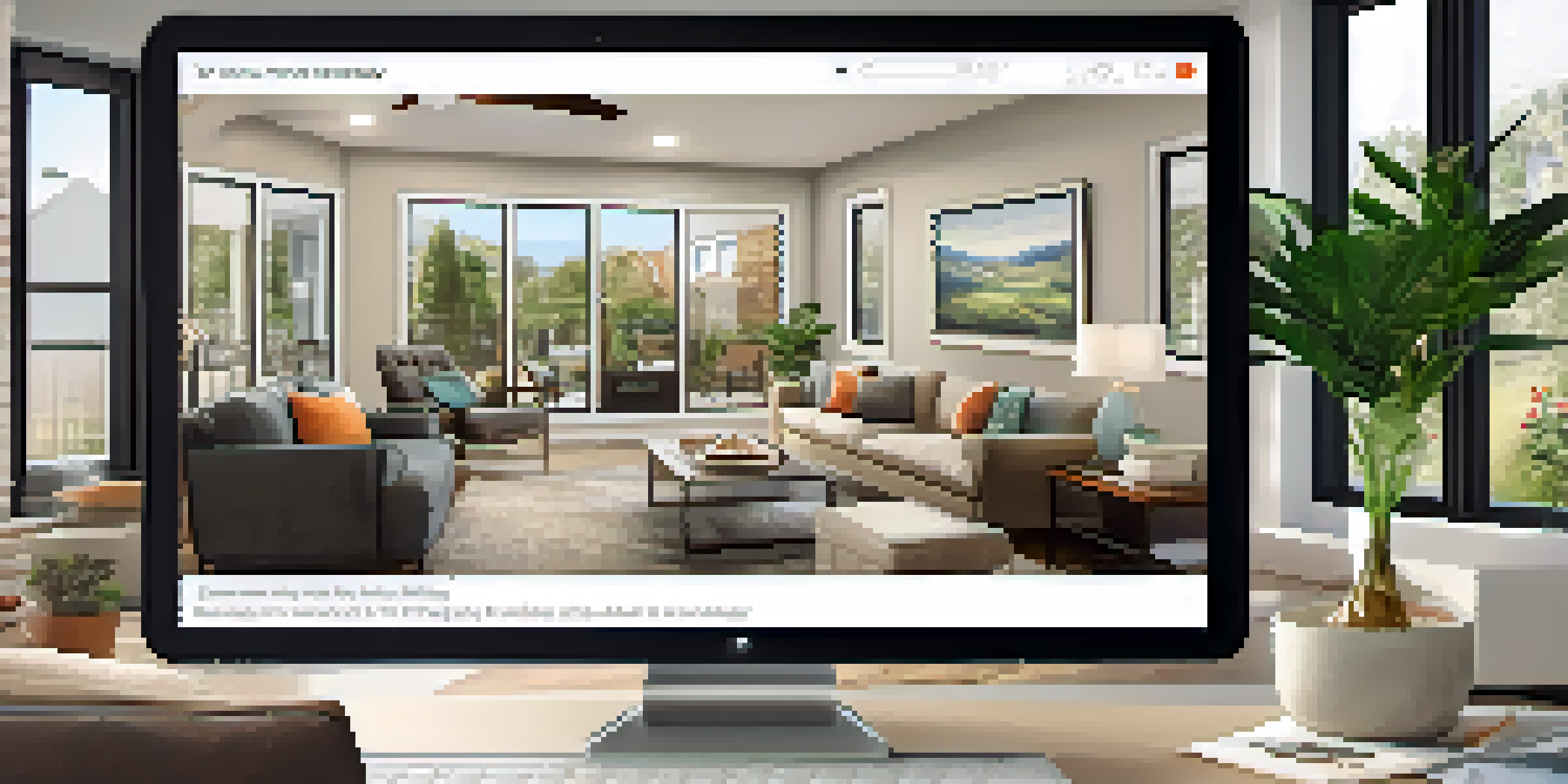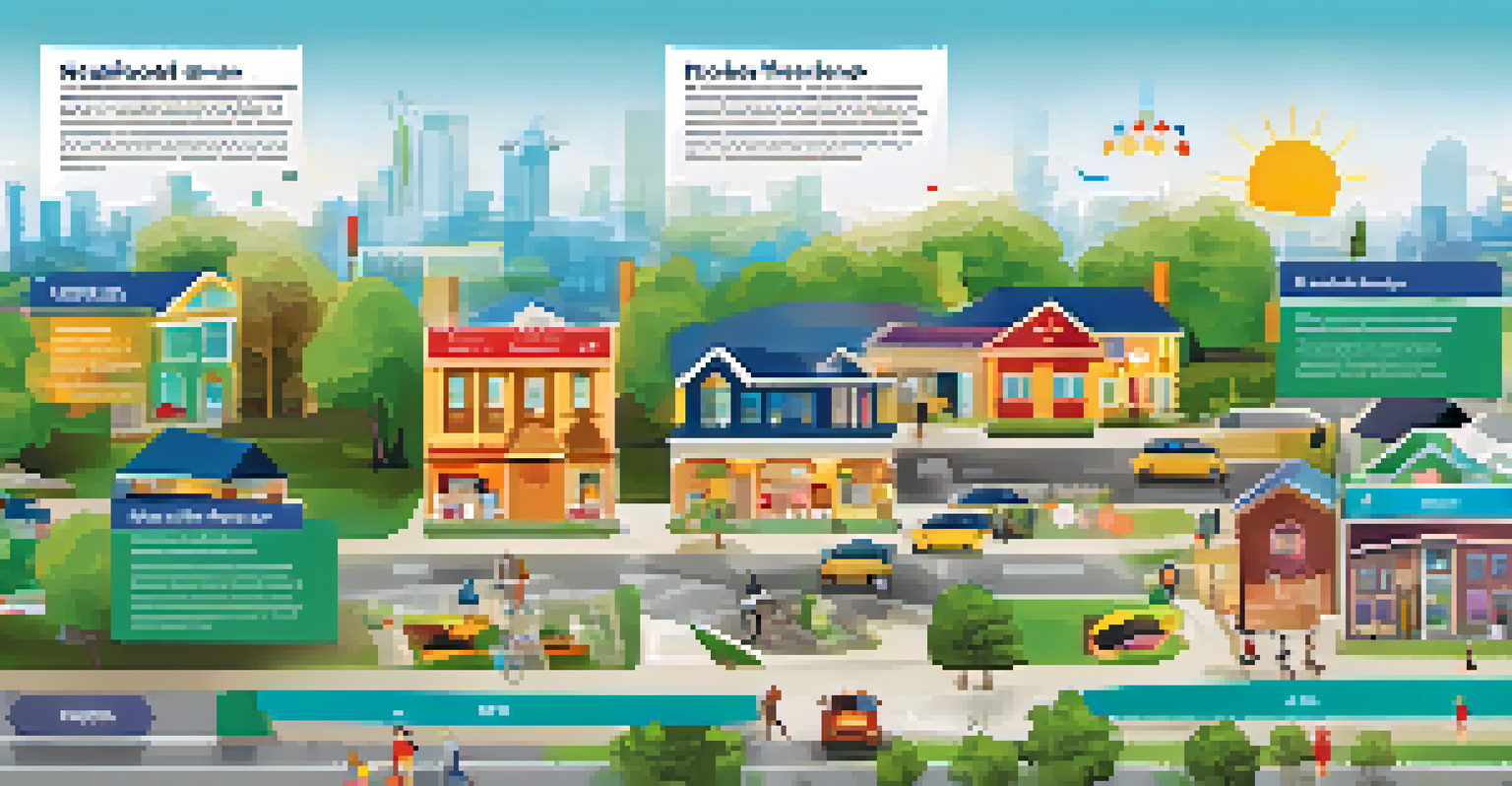Best Practices for Hosting Virtual Open Houses

Choose the Right Technology for Your Virtual Open House
Selecting the right platform is crucial for hosting a successful virtual open house. Look for user-friendly options like Zoom or Facebook Live, which offer features such as screen sharing and chat functions. These tools can enhance interaction and provide a more personal experience for potential buyers.
Technology is best when it brings people together.
Consider the technical requirements as well. Ensure your internet connection is stable, and conduct a test run to troubleshoot any issues before the actual event. This preparation can help you avoid technical hiccups that might disrupt the flow of your presentation.
Finally, familiarize yourself with the platform's features. Understanding how to navigate the interface will allow you to focus on engaging with your audience rather than fumbling with technology during the event.
Promote Your Virtual Open House Effectively
Promotion is key to attracting attendees to your virtual open house. Utilize social media platforms, email newsletters, and your website to spread the word. Create eye-catching graphics and concise messages that highlight the event's date, time, and unique selling points of the property.

Consider collaborating with local businesses or influencers to reach a broader audience. Their endorsement can lend credibility and draw more viewers to your event. Additionally, using targeted ads can help you connect with potential buyers who may not be in your immediate network.
Choose the Right Tech Tools
Selecting user-friendly platforms like Zoom or Facebook Live can enhance interaction during your virtual open house.
Don't forget to send reminders as the event approaches. A friendly reminder a day or two before can help ensure that interested parties mark their calendars and prepare to join the virtual open house.
Create an Engaging Virtual Tour Experience
The virtual tour is the heart of your open house, so make it as engaging as possible. Start with a warm introduction, sharing a bit about yourself and your excitement for the property. This personal touch can help build rapport with your audience.
The key to successful leadership today is influence, not authority.
As you guide viewers through the property, highlight its unique features and benefits. Use storytelling to paint a picture of how they might live in the space. For instance, describe how the spacious kitchen is perfect for family gatherings or how the backyard is an ideal spot for summer barbecues.
Encourage interaction during the tour by inviting questions and comments. This not only keeps your audience engaged but also gives them a chance to express their specific interests or concerns, allowing you to address them in real-time.
Prepare for Common Questions from Attendees
During a virtual open house, attendees will likely have questions about the property, the neighborhood, and the buying process. Anticipating these questions can help you respond confidently and provide valuable information. Common inquiries might include the age of the roof, local schools, or nearby amenities.
Prepare a FAQ sheet that covers these topics, which you can refer to during the event. This not only speeds up your response time but also shows your professionalism and knowledge of the market. It reassures potential buyers that you are well-equipped to guide them through the purchasing process.
Choose User-Friendly Technology
Selecting platforms like Zoom or Facebook Live enhances interaction and provides a personal touch during your virtual open house.
Additionally, encourage viewers to ask questions throughout the event. This interaction can create a more dynamic atmosphere and help attendees feel more connected to you and the property.
Follow Up with Attendees After the Event
Following up with attendees is an essential step that many hosts overlook. A simple thank-you email can go a long way in making potential buyers feel appreciated. In this message, recap some highlights of the open house and provide any additional information they may have requested.
Consider sending a survey to gather feedback on their experience. This can help you identify areas for improvement and gauge interest in the property. Plus, it shows that you value their opinions and are committed to enhancing future events.
Lastly, keep the lines of communication open. If there are any new listings or upcoming events, share that information with your attendees. This ongoing engagement can keep you top-of-mind when they're ready to make a decision.
Incorporate Visual Elements to Enhance Engagement
Visual elements play a pivotal role in capturing and maintaining your audience's attention. Use high-quality images and video clips of the property to showcase its best features. Consider creating a slideshow that highlights different rooms and outdoor spaces, providing a comprehensive view of what the property has to offer.
Incorporate virtual staging if the home is empty to help viewers visualize how they might furnish the space. Tools like virtual reality can also create an immersive experience, allowing potential buyers to feel as though they are walking through the home.
Promote Your Event Widely
Utilizing social media, local partnerships, and targeted ads can significantly boost attendance at your virtual open house.
Additionally, consider using graphics or infographics to present information about the neighborhood, such as local schools, parks, and shopping. These visuals can make the information more digestible and appealing, enhancing the overall experience.
Ensure a Professional Appearance and Environment
Your appearance and the environment you present during a virtual open house can greatly influence viewers' perceptions. Dress professionally, as you would for an in-person event, to convey credibility and seriousness. This simple step can help establish trust with potential buyers.
Make sure your background is tidy and free of distractions. A neutral backdrop, such as a well-lit room with minimal clutter, can help keep the focus on you and the property. If possible, consider showcasing a small portion of the property in the background to remind viewers of the home’s features.

Lighting is also crucial; ensure that your face is well-lit, and avoid backlighting that can create shadows. A well-lit and organized environment will reflect your professionalism and commitment to delivering a high-quality experience.